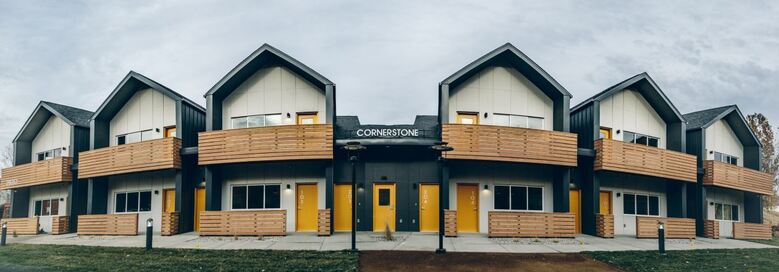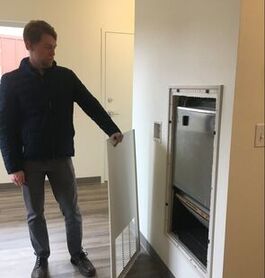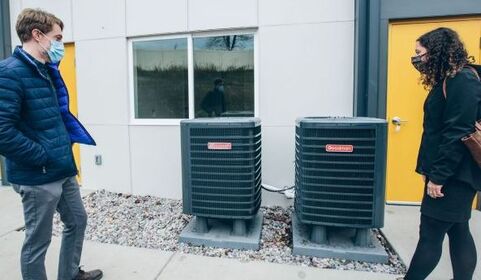|
Project Type: Low-Income Multifamily Residential, New Construction System Type: High-Efficiency, R-410A Split System Heat Pump Cooling Capacity: 18,000 to 57,600 BTU/h Heating Capacity: 18,000 to 59,000 BTU/h SEER Rating: Up to 14 SEER HSP Rating: Up to 9.0 HSP Project Concept, Scope, and Funding The Missoula Housing Authority (MHA) built the Cornerstone Apartments in 2020, an urban infill project with 12 one-bedroom homes for very-low-income people (<30% AMI) with priority given to frequent users of the City’s emergency response systems. From the beginning, the project team intended to include all electric systems. Due to budget limitations, MHA was initially forced to remove high-efficiency air-source heat pumps from the schematic design and replace them with less-efficient electric resistance heaters, which are cheaper to install, but more expensive and energy-intensive to operate over the long-term. The desire to figure out an affordable, efficient way to move forward with all-electric systems sparked Cornerstone to become a "test project" for Climate Smart Missoula's new Footprint Fund Carbon Offset program, allowing an outside entity, in this case Clearwater Credit Union, to earn carbon offsets by providing extra funding to support the inclusion of high-efficiency heat pumps in the project. Clearwater funded half of the cost of the heat pumps as part of their effort to offset almost two years of their emissions, at a price of ~$25/ton. The lower energy and operation and maintenance costs will save MHA ~$107,000 over the lifetime of the system! More about this offset program and how it worked are detailed HERE. The Case for High-performing Heat Pumps MMW Architects, the architectural firm that designed the Cornerstone Apartments, used Sefaira and the DOE Energy Plus2 engine, cross referenced with their internal database, regional averages, and the US Energy Information Administration’s CBECS database (Commercial Building Energy Consumption Survey), to estimate the energy use of the baseline system (electric resistance heat) and the more efficient system (air-source heat pumps). This model estimated the annual energy savings of 63,021 kWh/year over a 20-year lifetime, giving a total electricity savings of 1,260,420 kWh/lifetime (1,260 MWh/lifetime). MMW also estimated the additional cost of the heat pumps to be $44,000. The Bottom Line
In the end, each apartment was built with a high-efficiency split-system heat pump that will reduce greenhouse gas emissions by nearly 900 tons over the systems lifetime. The estimated $10,000 in annual energy savings will offset the operational costs for the apartment complex for MHA.
0 Comments
|
Electrify Missoula is a collaboration between Missoula County, Climate Smart Missoula and the City of Missoula.
This website is intended for informational purposes only. Be sure to consult a professional before making your plan for electrification.
This website is created and updated by Climate Smart Missoula.
Learn more about all of our local climate efforts at
missoulaclimate.org
Learn more about all of our local climate efforts at
missoulaclimate.org
Proudly powered by Weebly




 RSS Feed
RSS Feed


